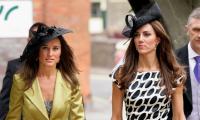GOESAN, South Korea: Bungee-jumping, baseball stadiums and a major car company: the recipe for South Korea’s extraordinary dominance of Olympic archery is unorthodox but pointedly effective.
South Korean archers have ruled the sport for decades, winning 23 out of the 34 Olympic gold medals awarded since 1984, including all four golds at the last Games in Rio five years ago.
The women have won all eight team titles since that discipline was added on home turf in Seoul in 1988, with the men taking five out of eight.
Theories abound to why South Koreans are so good at archery, including vague mumblings about their “sensitive fingers” — a real or imagined physical trait also cited when discussing the nation’s dominance in women’s golf.
Archery is unusually lucrative in the country, with businesses and local governments owning more than 30 teams in competitive leagues and paying their members’ salaries — there are more than 140 professionals according to the Korea Archery Association (KAA).
And the Olympic selection process is both gruelling and ruthless: the three top male and female archers in multiple trials over several months get the slots, with no credit given for previous victories, records or standings.
“There is a saying that if you finish first in South Korea, you can win gold at the Olympics,” said Kim Hyung-tak, who coached the national team for the 1984 Games in Los Angeles, where they won their first gold.
Even top stars can be cast aside in the relentless pursuit of gold.
Among those representing Korea in Tokyo will be a teenager and three women archers with no Olympic experience, while reigning Olympic champions Ku Bon-chan and Chang Hye-jin both failed to make the team.
“It’s not that they’ve lost their skill,” explained KAA vice chairman Jang Young-sool. “It just means that South Korea has many skilled archers.”
In the 1970s, as tension mounted on the Korean peninsula, South Korea’s then-military government encouraged boys to train in taekwondo and girls to learn archery.
Coach Kim trained dozens of teachers from schools across the nation so they could instruct their pupils.
Archery had little funding and poor facilities, Kim told AFP, with competitions being held in drained swimming pools and results to match, despite a centuries-long tradition in the sport.
Ahead of the Seoul Games, dictator Chun Doo-hwan ordered the country’s major businesses to sponsor national sports federations to try to ensure a respectable performance.
Carmaker-to-shipbuilder Hyundai Group was allocated archery, with a son of its founder becoming KAA chairman. It has reportedly pumped at least $40 million into the sport over the past three decades.
Top researchers from Hyundai have carried out scientific studies to improve archers’ performances, and Jang says the firm’s long-term backing has been “essential”.
The current Hyundai Motor chairman Euisun Chung has been head of the KAA since 2005.
Jang credits him with the team’s success in Rio after he provided a customised bus equipped with beds, yoga mats and showers to ensure the athletes were well rested. He even provided bullet-proof cars for their safety.
Chung was the first person that Ku Bon-chan ran to after winning the individual men’s gold and the team showed their appreciation by tossing the Hyundai executive into the air.
The team has adopted unique training methods, ranging from bungee jumping to control nerves to practising at a full baseball stadium to handle the noise of large crowds.
Ahead of London 2012 they studied the British capital’s rain and wind patterns and scoured South Korea for a training location with similar weather, finally picking Namhae on the often damp southern coast.
Representational image. — Facebook/ISSF.ShootingKARACHI: Pakistan’s six shooters will participate in the ISSF...
Pakistan's Asim Khan and Noor Zaman have qualified for the quarter-finals of West Of Ireland Open 2024. —...
The Pakistan Sports Board building. — APP/FileLAHORE: After Sports Board Punjab refused to give Punjab Stadium for...
Delhi Capitals captain Rishabh Pant. — AFP FileNEW DELHI: Delhi Capitals captain Rishabh Pant produced a...
India's captain Rohit Sharma speaks during a press conference at the Pallekele International Cricket Stadium in Kandy...
Former Asian champion Saadi Abbas. — Facebook/pakkarateinLAHORE: Dogged by injuries and offshore settlement...







